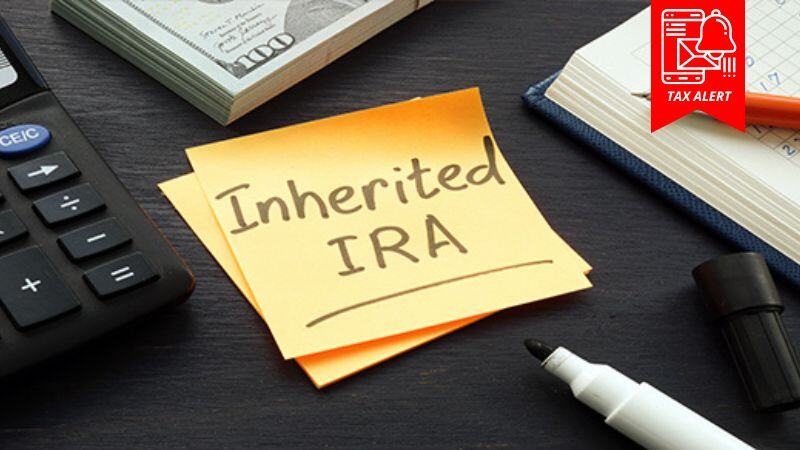IRS issues final regulations on inherited IRAs
The IRS has published new regulations relevant to taxpayers subject to the “10-year rule” for required minimum distributions (RMDs) from inherited IRAs or other defined contribution plans. The final regs, which take effect in 2025, require many beneficiaries to take annual RMDs in the 10 years following the deceased’s death.
SECURE Act ended stretch IRAs
The genesis of the new regs dates back to the 2019 enactment of the Setting Every Community Up for Retirement Enhancement (SECURE) Act. One of the many changes in that tax law was the elimination of so-called “stretch IRAs.”
Previously, all beneficiaries of inherited IRAs could stretch RMDs over their entire life expectancies. Younger heirs in particular benefited by taking smaller distributions for decades, deferring taxes while the accounts grew. These heirs also could pass on the IRAs to later generations, deferring the taxes even longer.
The SECURE Act created limitations on which heirs can stretch IRAs. These limits are intended to force beneficiaries to take distributions and expedite the collection of taxes. Specifically, for IRA owners or defined contribution plan participants who died in 2020 or later, only “eligible designated beneficiaries” (EDB) are permitted to stretch out payments over their life expectancies. The following heirs are considered eligible for this favorable treatment:
-
-
- Surviving spouses,
- Children younger than “the age of majority,”
- Individuals with disabilities,
- Chronically ill individuals, and
- Individuals who are no more than 10 years younger than the account owner.
-
All other heirs (known as designated beneficiaries) are required to take the entire balance of the account within 10 years of the death, regardless of whether the deceased died before, on or after the required beginning date (RBD) of his or her RMDs.
Note: In 2023, under another law, the age at which account owners must begin taking RMDs increased from 72 to 73, pushing the RBD date to April 1 of the year after the account owner turns 73. The age is slated to jump to 75 in 2033.
Proposed regs muddied the waters
In February 2022, the IRS issued proposed regs addressing the 10-year rule — and they brought some bad news for many affected heirs. The proposed regs provided that, if the deceased dies on or after the RBD, designated beneficiaries must take their taxable RMDs in years one through nine after death (based on their life expectancies), receiving the balance in the tenth year. A lump-sum distribution at the end of 10 years wouldn’t be allowed.
The IRS soon heard from confused taxpayers who had recently inherited IRAs or defined contribution plans and didn’t know when they were required to start taking RMDs. Beneficiaries could have been hit with a penalty based on the amounts that should have been distributed but weren’t. This penalty was 50% before 2023 but was lowered to 25% starting in 2023 (or 10% if a corrective distribution was made in a timely manner). The plans themselves could have been disqualified for failing to make RMDs.
As a result, the IRS issued a series of waivers on enforcement of the 10-year rule. With the release of the final regulations, the waivers will come to an end after 2024.
Final regs settle the matter
The IRS reviewed comments on the proposed regs suggesting that if the deceased began taking RMDs before death, the designated beneficiaries shouldn’t be required to continue the annual distributions as long as the remaining account balance is fully distributed within 10 years of death. The final regs instead require these beneficiaries to continue receiving annual distributions.
If the deceased hadn’t begun taking his or her RMDs, though, the 10-year rule is somewhat different. While the account has to be fully liquidated under the same timeline, no annual distributions are required. That gives beneficiaries more opportunity for tax planning.
To illustrate, let’s say that a designated beneficiary inherited an IRA in 2021 from a family member who had begun to take RMDs. Under the waivers, the beneficiary needn’t take RMDs for 2022 through 2024. The beneficiary must, however, take annual RMDs for 2025 through 2030, with the account fully distributed by the end of 2031. Had the deceased not started taking RMDs however, the beneficiary would have the flexibility to not take any distributions in 2025 through 2030. So long as the account was fully liquidated by the end of 2031, the beneficiary would be in compliance.
Additional proposed regs
The IRS released another set of proposed regs regarding other RMD-related changes made by SECURE 2.0, including the age when individuals born in 1959 must begin taking RMDs. Under the proposed regs, the “applicable age” for them would be 73 years.
They also include rules addressing:
-
-
- The purchase of an annuity with part of an employee’s defined contribution plan account,
- Distributions from designated Roth accounts,
- Corrective distributions,
- Spousal elections after a participant’s death,
- Divorce after the purchase of a qualifying longevity annuity contract, and
- Outright distributions to a trust beneficiary.
-
The proposed regs would take effect in 2025.
Timing matters
It’s important to realize that even though RMDs from an inherited IRA aren’t yet required, that doesn’t mean a beneficiary shouldn’t take distributions. If you’ve inherited an IRA or a defined contribution plan and are unsure of whether you should be taking RMDs, contact us. We’d be pleased to help you determine the best course of action for your tax situation.
© 2024

